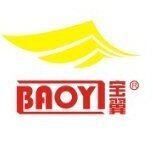-
Welcome to Auto Parts Forum
Whether you are a veteran automotive parts guru or just someone looking for some quick auto parts advice, register today and start a new topic in our forum. Registration is free and you can even sign up with social network platforms such as Facebook, X, and LinkedIn.
What Headlight Bulb Do I Need For My Car?
-
Similar Topics
-
By APF
When selecting parts for a car repair, it pays to know the differences between original and aftermarket parts. Whenever possible, get estimates for both.
Choosing between original and aftermarket car parts — and even used parts of either type — is all about squaring your priorities with your budget.
You’ll have different options depending on the part and the shop. And the best choice will depend on whether you’re trying to keep repairs cheap, restore your car’s appearance after a wreck or soup up your ride.
» SIGN UP: link hidden, please login to view
Before we get into that, here are the key differences:
Original equipment manufacturer (OEM) parts match those that came with your car, and are of the same quality as its original parts. They’re also the most expensive. Aftermarket parts are cheaper, and made by other manufacturers — often several, giving you more options. Used parts may have a bit of wear and tear, but should be inspected or rebuilt to ensure they’ll work. These are the cheapest option. Choosing between aftermarket and OEM parts
Your decision will depend on the type of repair and the quality and price of the parts. Always look for parts that come with a warranty, even if they’re OEM, so you’ll be protected in case they fail.
Auto body repairs
Some aftermarket parts may be OK for
link hidden, please login to view, but others won’t be as good, says Michael Calkins, manager of technical services at AAA. “There’s a lot of variation in quality.” For example, he says, aftermarket parts often don’t have the same level of rustproofing as original parts, fit and finish don’t match, or panels don’t align properly. If OEM parts are used in auto body repair, the car should look and work exactly as it did before the damage, because everything will match up. OEM parts are also crash-tested, unlike many aftermarket parts.
Aftermarket parts come at varying price points and levels of quality, but because they are cheaper, insurance companies often prefer them. If you want OEM parts but are dealing with an insurer that wants the shop to use aftermarket parts, ask to pay the difference.
“There’s also the option of used parts, depending on the age of the vehicle,” Calkins says. “It may be cheaper than an aftermarket part but still have all of the original quality.”
Mechanical repairs
A used part, whether it’s OEM or aftermarket, can really save money on repairs under the hood, so long as it’s inspected first and warrantied. And some aftermarket companies reverse-engineer their products to be even better than OEM versions.
For example, many car buffs will tell you that you can get heavy-duty shocks and struts or brake pads that are made of stronger materials. Scan some reviews online, or talk with your mechanic if you’re not sure whether an aftermarket part could be an upgrade.
Adding some extras
If you’d like to modify your ride by adding something like a backup camera or back-seat TV screen, you’ll probably be looking for aftermarket parts. Certain aftermarket upgrades could increase
link hidden, please login to view. This is especially true for improvements like a better sound system or alloy wheels, rather than mechanical repairs. Who provides OEM or aftermarket parts?
The options you’ll have for parts depends on the nature of the repairs and what type of shop you take your car to:
Dealership repair shops will offer only OEM parts — they have no reason to offer a cheaper product from a competitor link hidden, please login to view may be able to offer you a choice between OEM and aftermarket parts Independent garages that specialize in your type of vehicle will likely have both, but with quicker access to OEM parts, including used OEM parts, which can really save you Auto body shops can offer both, but if your collision repair is part of an insurance claim, the insurer will likely prefer aftermarket parts to save money Depending on the job, the cost of OEM versus aftermarket parts varies. Whenever you’re given the choice, ask to see estimates for both so you can weigh your options.
Source:
link hidden, please login to view -
By WiperTech008
How car wiper works
Car wipers help drivers see clearly when it's raining or snowing. They’re a small but important part of the car. Here’s a simple look at how they work:
Wiper Blades
They’re just rubber (or sometimes silicone) strips that slide across your windshield to keep it clear.
Wiper Arms
The metal arms hold the blades and move them back and forth across the glass.
Wiper Motor
There’s a little electric motor under the hood that makes the arms move. It’s usually under the hood.
Linkage
This is a set of mechanical parts that connect the motor to the arms. It makes sure both arms move together smoothly.
Wiper Pivot
This is the spot where the arms are attached to the car. It lets the arms rotate as they move.
Wiper Switch
You turn the wipers on and off with a switch—usually on the dashboard or the steering wheel.
Wiper Relay
This part controls the power going to the motor. It helps the wipers run at different speeds, like slow, fast, or on and off (intermittent).
How It All Works Together
When you turn on the wipers, the switch sends a signal to the relay. The relay gives power to the motor. The motor starts spinning, and the linkage changes that spinning motion into the back-and-forth movement of the arms. They just sweep across the windshield and get rid of whatever’s in the way.
Intermittent Wiping
For light rain, you can use the intermittent setting. It makes the wipers move with short pauses in between.
Washer System
Most cars also have a washer system that sprays cleaning fluid on the windshield. When you press the washer button, a small pump sprays the fluid through nozzles to help clean the glass.
-
By WiperTech008
2009 Cadillac DTS Wiring Harness - Anyone Know the Part # or Compatible Alternatives?
-
By Counterman
March 31, 2025, marked a milestone in engine oil development—the first license date for the
link hidden, please login to view. While that might sound like just another specification in a long line of upgrades, for professional parts counter pros selling to independent repair shops, it’s a moment that carries real-world impact. Understanding what’s new—and how to help shop owners explain it to their customers—could be the difference between a routine oil sale and a value-driven recommendation. First, What Is GF-7?
GF-7 builds on the progress of the GF-6 specification introduced in 2020. Like its predecessor, GF-7 is split into two categories: GF-7A for most modern gasoline engines and GF-7B for low-viscosity formulations like 0W-16, commonly used in vehicles from Japanese OEMs like Toyota. The key takeaway? GF-7 oils are fully backward compatible. If a customer’s vehicle previously called for GF-6, GF-5, or even GF-4, a GF-7A product can safely be used. For 0W-16 applications, GF-7B covers those needs—just make sure the shop isn’t using a 0W-16 oil in an engine not designed for it.
“When they developed the GF categories almost 30-plus years ago, the idea was that it’s an evergreen category, so they’re all backward compatible,” Dr. Michael Warholic, global technology director,
link hidden, please login to view. “The caveat is that GF-7B category. Some engines don’t like thin oil because they’re just not made to operate that way. You have to be careful about misapplication. “The OEMs identified that and developed a shield icon with 0W-16 label to make it easy to identify it versus 0W-20 or heavier oil,” he said.
How to Identify GF-7 on the Shelf
Paying attention to the API designation and symbols on the bottle is key. Counter pros should be looking for the API “donut” and the Starburst or Shield symbols:
• The Starburst still signals general GF-category oils (GF-7A).
• A Shield symbol identifies 0W-16 oils under the GF-7B track.
• Look for API donut to know it’s GF-7.
“It boils down to: if you see the Starburst, it’s a qualified GF oil. If you see the donut on the back, it has the API credentials on it,” Warholic explained.
There’s a one-year transition period where GF-6 oils will still be in circulation, but by March 2026, GF-7 will be the standard.
“Model Year 2026 is when we expect the OEMs will start to notice GF-7 oils in the owner’s manual,” added Karl Kocher, director of light duty product strategy, Valvoline.
Why Should Your Shop Customers Care?
Not all oils are created equal, and consumers are becoming more selective. GF-7 brings improvements in durability, fuel economy, wear protection and emissions performance. This includes:
• Deposit control: GF-7 increases limits on piston cleanliness to limit deposits, helping prevent buildup that can lead to costly repairs like ring sticking.
• Wear resistance: Chain wear limits are tighter to protect timing systems and avoid check-engine lights.
• Cold start protection: Improved low-temp viscosity performance means oil flows better when the engine is most vulnerable—at startup.
• LSPI protection over time: GF-7 includes a new test for aged oil’s ability to resist Low-Speed Pre-Ignition, protecting direct-injected turbo engines long after the oil change.
• Ash limit: For the first time, GF-7 introduces an ash cap to help reduce emissions—a nod to the increasing regulatory pressure on internal combustion engines.
Selling the Upgrade
In addition to standard GF-7 products, some oil suppliers are offering “above and beyond” formulations. Valvoline’s Restore & Protect, for example, is a fully synthetic motor oil that aims at both older, high-mileage vehicles (restore) and new vehicles (protect). While the oil sports a proprietary formulation, Valvoline has noted two proprietary technologies–Active Clean, which removes deposits, and Liqui-Shield, which prevents deposit formation.
“The active technology behind the Restore and Protect products is the same in our GF-6 and our GF-7 products,” Warholic confirmed. “For GF-7, it’s built on a slightly different platform to meet the requirements. The Restore and Protect technology is above and beyond even the deposit performance required for GF-7. It exceeds that performance and does something that no other oil does or that’s actually required by GF-7. It is our own proprietary technology.”
That’s especially valuable in older engines that were exposed to less advanced oils under earlier standards like GF-4 or GF-5. With Restore and Protect, your shop customers can offer a tiered service—a standard GF-7 oil for maintenance, or R&P for vehicles showing signs of engine wear or for customers wanting the best protection available.
Bottom Line for Counter Pros
• Understand the labeling: Starburst = GF-7A; Shield = GF-7B; look for API SQ on the donut.
• Ask about the vehicle: Year, model, and what oil is currently being used.
• Explain backward compatibility: GF-7 oils replace earlier categories in most cases.
• Be proactive: As model year 2026 approaches, shops will need help identifying the right oils—GF-7A or GF-7B—and transitioning their inventory.
GF-7 isn’t just a new acronym—it’s the new baseline. The counter pros who get ahead of it now will be the ones their shop customers rely on tomorrow.
The post
link hidden, please login to view appeared first on link hidden, please login to view.
link hidden, please login to view -
-






Recommended Posts
Join the conversation
You can post now and register later. If you have an account, sign in now to post with your account.
Note: Your post will require moderator approval before it will be visible.